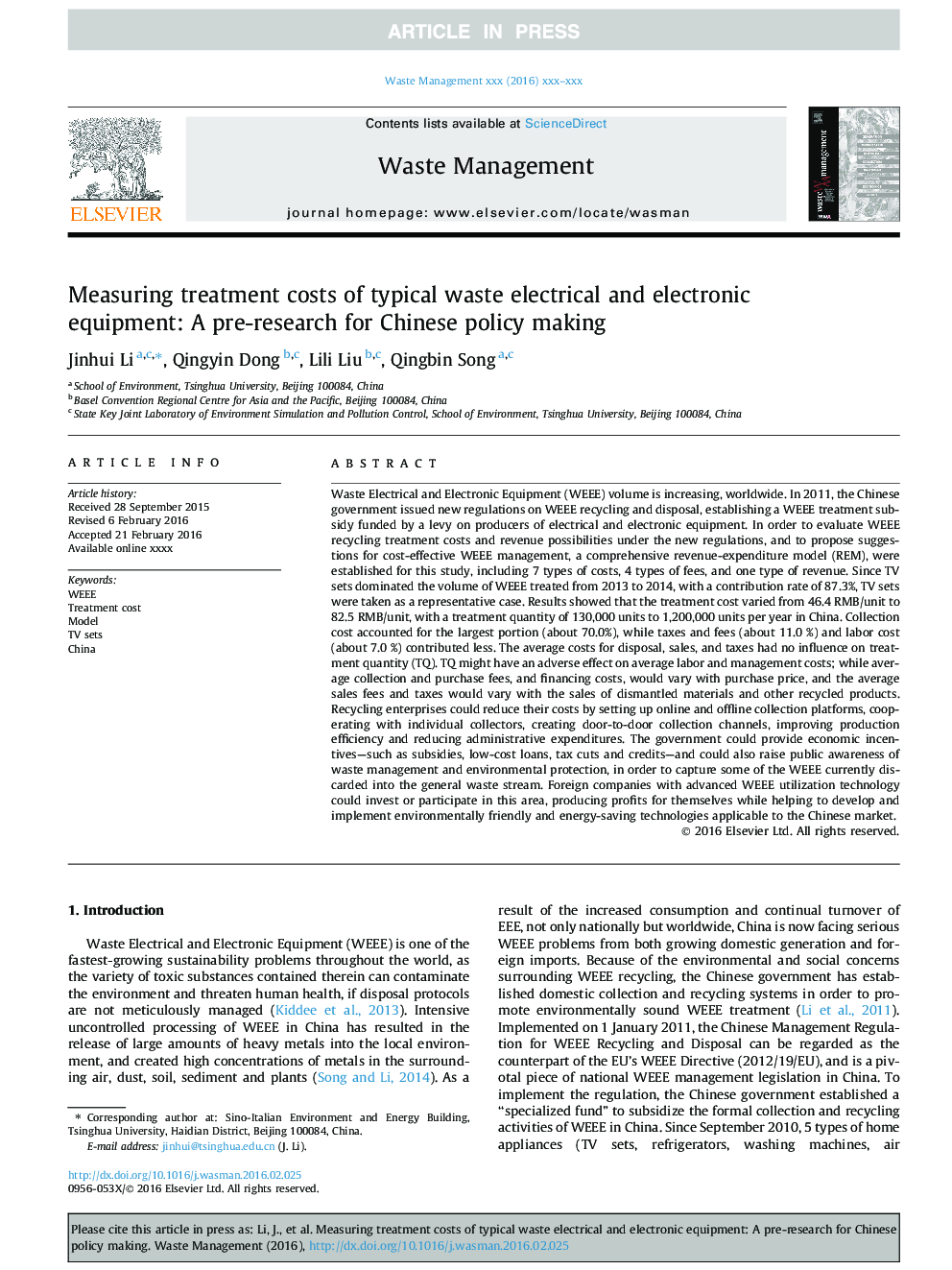| کد مقاله | کد نشریه | سال انتشار | مقاله انگلیسی | نسخه تمام متن |
|---|---|---|---|---|
| 5757154 | 1622629 | 2016 | 10 صفحه PDF | دانلود رایگان |
عنوان انگلیسی مقاله ISI
Measuring treatment costs of typical waste electrical and electronic equipment: A pre-research for Chinese policy making
ترجمه فارسی عنوان
هزینه های اندازه گیری هزینه های درمان لوازم الکتریکی و الکترونیکی معمولی: پیش تحقیق برای سیاست گذاری چینی
دانلود مقاله + سفارش ترجمه
دانلود مقاله ISI انگلیسی
رایگان برای ایرانیان
موضوعات مرتبط
مهندسی و علوم پایه
علوم زمین و سیارات
مهندسی ژئوتکنیک و زمین شناسی مهندسی
چکیده انگلیسی
Waste Electrical and Electronic Equipment (WEEE) volume is increasing, worldwide. In 2011, the Chinese government issued new regulations on WEEE recycling and disposal, establishing a WEEE treatment subsidy funded by a levy on producers of electrical and electronic equipment. In order to evaluate WEEE recycling treatment costs and revenue possibilities under the new regulations, and to propose suggestions for cost-effective WEEE management, a comprehensive revenue-expenditure model (REM), were established for this study, including 7 types of costs, 4 types of fees, and one type of revenue. Since TV sets dominated the volume of WEEE treated from 2013 to 2014, with a contribution rate of 87.3%, TV sets were taken as a representative case. Results showed that the treatment cost varied from 46.4Â RMB/unit to 82.5Â RMB/unit, with a treatment quantity of 130,000 units to 1,200,000 units per year in China. Collection cost accounted for the largest portion (about 70.0%), while taxes and fees (about 11.0 %) and labor cost (about 7.0 %) contributed less. The average costs for disposal, sales, and taxes had no influence on treatment quantity (TQ). TQ might have an adverse effect on average labor and management costs; while average collection and purchase fees, and financing costs, would vary with purchase price, and the average sales fees and taxes would vary with the sales of dismantled materials and other recycled products. Recycling enterprises could reduce their costs by setting up online and offline collection platforms, cooperating with individual collectors, creating door-to-door collection channels, improving production efficiency and reducing administrative expenditures. The government could provide economic incentives-such as subsidies, low-cost loans, tax cuts and credits-and could also raise public awareness of waste management and environmental protection, in order to capture some of the WEEE currently discarded into the general waste stream. Foreign companies with advanced WEEE utilization technology could invest or participate in this area, producing profits for themselves while helping to develop and implement environmentally friendly and energy-saving technologies applicable to the Chinese market.
ناشر
Database: Elsevier - ScienceDirect (ساینس دایرکت)
Journal: Waste Management - Volume 57, November 2016, Pages 36-45
Journal: Waste Management - Volume 57, November 2016, Pages 36-45
نویسندگان
Jinhui Li, Qingyin Dong, Lili Liu, Qingbin Song,
